Overview
Diagnostic analytics can be broadly categorized into two distinct areas:
- Anomaly detection
- What-if analysis
Each category serves a unique purpose in the realm of understanding past events and informing future decisions. Anomaly detection is crucial as it identifies unusual patterns that demand immediate attention, ensuring that organizations can respond swiftly to potential issues. On the other hand, what-if analysis empowers organizations to simulate various scenarios, allowing them to predict outcomes effectively. This capability not only enhances operational efficiency but also supports strategic planning. By leveraging these analytical tools, organizations can make informed decisions that drive success.
Introduction
In the dynamic realm of data analytics, diagnostic analytics emerges as an essential tool for organizations seeking to comprehend the ‘why’ behind historical events and trends. This analytical approach transcends simple data summarization, offering profound insights that foster informed decision-making and enhance operational efficiency.
With businesses increasingly acknowledging its critical role—particularly in industries such as healthcare and finance—the need for integrating advanced technologies and methodologies becomes paramount.
As the global market for diagnostic analytics is poised for significant growth, grasping its applications, challenges, and implementation strategies is crucial for organizations aiming to effectively leverage data in a competitive landscape.
Understanding Diagnostic Analytics: An Overview
Diagnostic analysis is a pivotal field that delves into the underlying reasons for past occurrences and trends. Investigative assessment, one of the two broad categories of diagnostic analytics, provides deeper insights into why specific results occurred, in contrast to descriptive analysis, which merely summarizes historical data. This analytical approach is essential for organizations aiming to enhance operational efficiency and make informed, data-driven decisions.
As we look toward 2025, the landscape of assessment methods is evolving rapidly, with organizations increasingly recognizing its significance in optimizing operations. The global Internet of Medical Things market is projected to reach a staggering $286.77 billion, underscoring the growing importance of assessment metrics in healthcare and operational efficiency. By pinpointing the root causes of inefficiencies, businesses can effectively tackle issues and refine their strategic planning processes.
Healthcare organizations, for instance, are leveraging assessment insights in conjunction with Robotic Process Automation (RPA) tools like EMMA RPA and Microsoft Power Automate. These technologies enhance patient outcomes through early illness forecasting and tailored treatment strategies, showcasing their transformative potential.
Numerous practical examples exist, with firms employing analytical tools to inform decision-making. Organizations that have established robust information protection measures, such as encryption and access control, have experienced significant improvements in operational efficiency while ensuring compliance with regulations like GDPR. This highlights the dual benefit of analytical assessment: enhancing operational processes while safeguarding consumer data.
The case study titled “The Importance of Protecting Consumer Data” illustrates how these measures can mitigate risks and bolster operational effectiveness.
Industry leaders assert that diagnostic analysis is vital for informed decision-making. Dmytro Tymofiiev, Delivery Manager at SPD Technology, emphasizes, “Sometimes it makes sense to assist your healthcare professionals in acquiring further education in science related to information, machine learning, or healthcare informatics to gain a deeper comprehension of the complexities of analysis.” Investing in knowledge is crucial as organizations navigate the intricacies of data analysis, ultimately leading to improved outcomes.
In conclusion, assessment analysis not only aids in understanding past performance but also plays a critical role in shaping future strategies. By distinguishing itself from descriptive data analysis, it empowers organizations to make informed choices that enhance operational efficiency and foster innovation. Current trends in diagnostic analysis for 2025 indicate a sustained focus on integrating advanced technologies, such as RPA, and training, further amplifying its impact on operational efficiency.
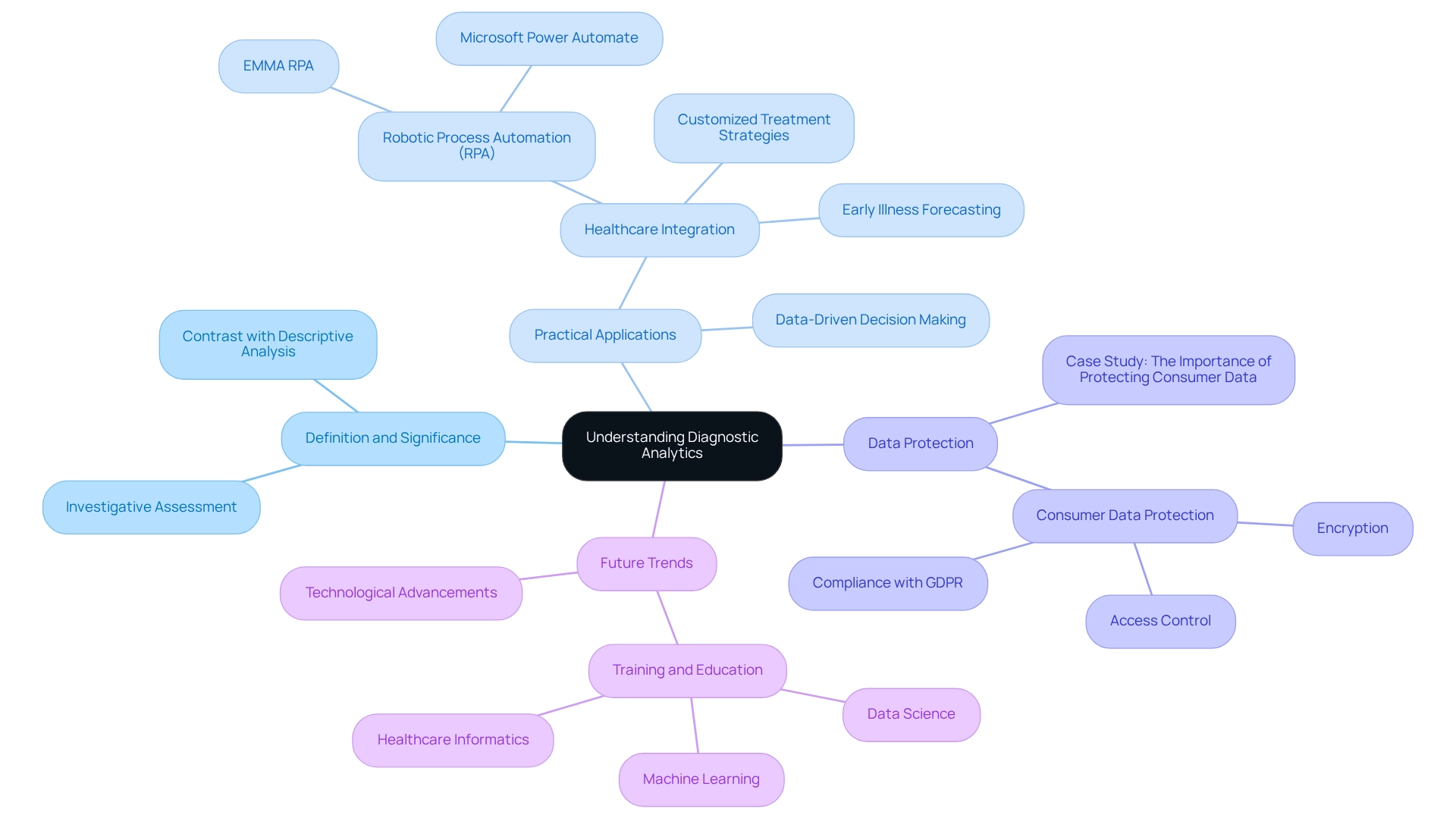
Exploring the Two Broad Categories of Diagnostic Analytics
Diagnostic analytics can be divided into two primary types: anomaly detection and what-if analysis. Anomaly detection is essential for identifying unusual patterns or outliers in information that deviate from expected behavior. For instance, a consumer typically spending $100 on groceries suddenly spending $10,000 exemplifies a point anomaly that warrants immediate investigation.
This technique is crucial across various industries, including finance for fraud detection, healthcare for monitoring patient vitals, and retail for managing inventory. By utilizing real-time information ingestion—such as Tinybird’s method for sales transactions—organizations can identify anomalies rapidly and initiate alerts, thereby improving operational responsiveness.
Moreover, the integration of Power BI services can significantly enhance reporting and provide actionable insights. With features like the 3-Day Power BI Sprint, businesses can swiftly create professionally designed reports that facilitate better decision-making. This becomes particularly important when addressing data inconsistency and governance challenges in business reporting, ultimately leading to improved operational efficiency.
Conversely, what-if analysis empowers businesses to simulate various scenarios by adjusting key variables to observe potential outcomes. This analytical method is invaluable for strategic planning and forecasting, enabling entities to evaluate the impact of various decisions prior to execution. Recent statistics indicate that businesses employing what-if analysis report a significant enhancement in decision-making efficiency, with studies demonstrating that entities incorporating this technique into their operational planning processes experience up to a 30% increase in efficiency.
The distinction between anomaly detection and what-if analysis is essential, as it highlights their differing objectives: anomaly detection aims to identify issues that require immediate attention, while what-if analysis supports proactive planning by exploring potential future scenarios. Expert insights underscore the significance of these techniques in diagnostic analytics, with content creator Bex Tuychiev noting, “I enjoy writing in-depth articles on AI and ML with a touch of sarcasm because you need to do something to make them a little less tedious.” This emphasizes the necessity for engaging and informative content in the field.
Furthermore, utilizing AI solutions, such as Small Language Models and GenAI Workshops, can further enhance companies’ capabilities in addressing quality challenges and training personnel effectively. Case studies, like the two-step outlier detection approach for weekly and monthly information using the Generalized Extreme Studentized Deviate (GESD) test combined with an adjusted box-plot method, illustrate the effective application of both techniques. These examples showcase how organizations can harness these tools to enhance their analytical capabilities and make informed decisions, ultimately driving operational efficiency and strategic growth.
Additionally, the adoption of Robotic Process Automation (RPA) can streamline manual workflows, allowing teams to focus on more strategic, value-adding work, thereby enhancing overall productivity in a rapidly evolving AI landscape.
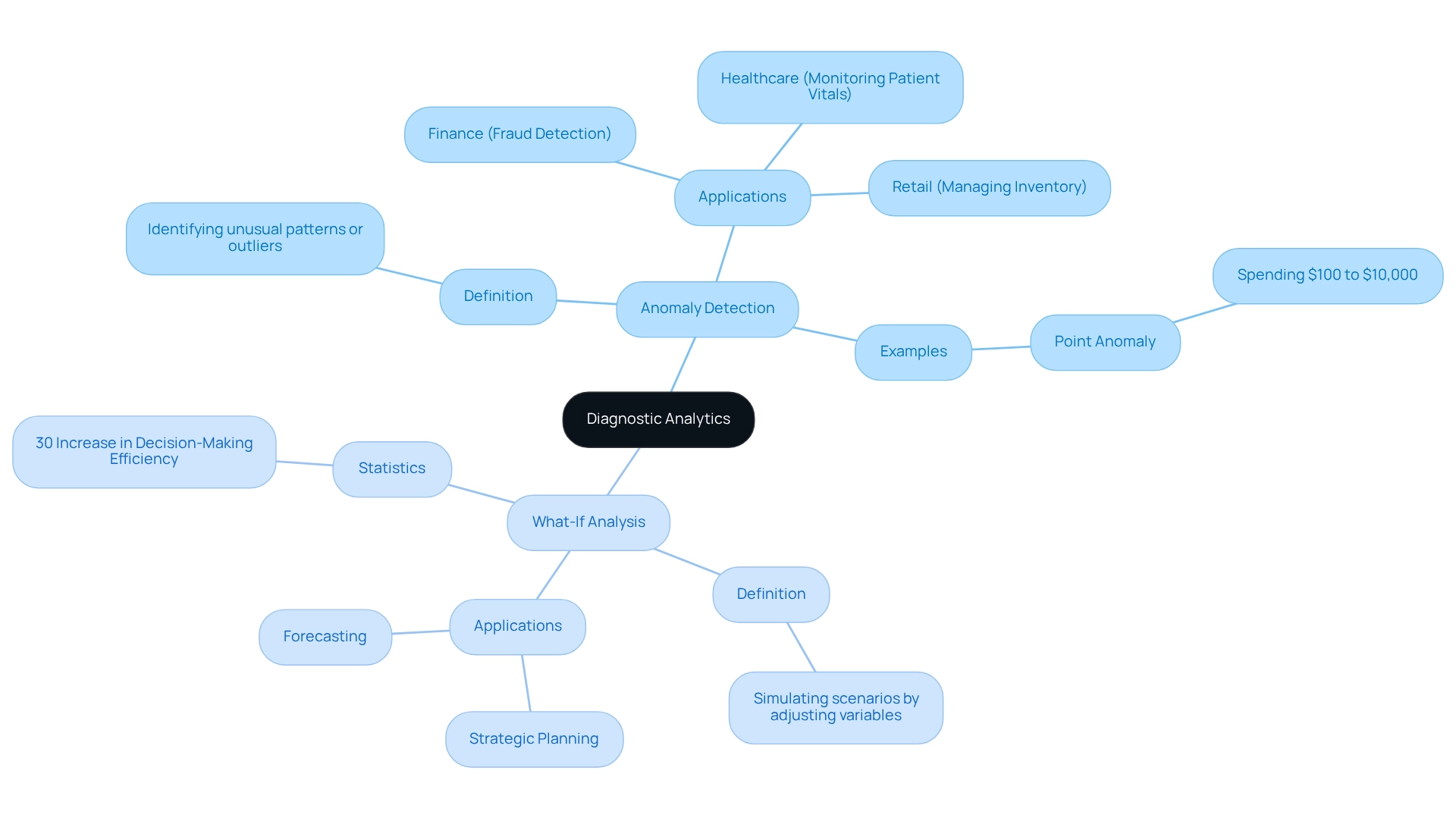
Category One: Identifying Anomalies and Outliers
Recognizing anomalies and outliers is essential for preserving information integrity and operational efficiency. This process employs a combination of statistical methods and visualization techniques to pinpoint points that diverge significantly from expected patterns. Key techniques include:
-
Statistical Tests: Techniques such as z-scores and the interquartile range (IQR) form the foundation of outlier detection. Tukey’s method, for example, defines the lower and upper fences for outliers using the formula: lower fence = Q1 – k * IQR and upper fence = Q3 + k * IQR, where k is typically set to 1.5 for moderate outliers. Additionally, the function of standard deviation is crucial; values that fall beyond the range established by the empirical rule are flagged as potential outliers. These methods empower analysts to gauge how far an observation is from the mean, effectively identifying possible anomalies.
-
Data Visualization: Visualization tools like box plots and scatter plots are pivotal in anomaly detection. These graphical representations allow analysts to swiftly identify irregularities by providing clear visual context. For instance, box plots can illustrate the distribution of values and highlight outliers, while scatter plots can reveal clusters and gaps in information that may indicate anomalies.
-
Machine Learning Algorithms: The integration of machine learning in anomaly detection has transformed the field. Algorithms such as clustering and classification can automatically identify outliers in extensive datasets, significantly boosting efficiency. Techniques like Grubbs’ test and Dixon’s Q test are utilized in manufacturing quality control to detect defective measurements, thereby minimizing waste and enhancing quality assurance. As noted by Andrew Rukhin, “this really transforms to a t distribution,” underscoring the significance of statistical methods in this context.
Alongside these conventional techniques, leveraging AI through Small Language Models can enhance information analysis and improve quality, while GenAI Workshops can provide teams with the necessary training to implement these technologies successfully. Furthermore, the adoption of Robotic Process Automation (RPA) can streamline manual workflows, allowing organizations to focus on strategic initiatives rather than repetitive tasks. The effectiveness of these methods is reinforced by emerging trends in outlier detection, which include the integration of machine learning for automated information cleaning and advanced visualization tools.
As data scientists continue to explore these advancements, the consensus is clear: combining statistical methods, machine learning algorithms, and RPA not only enhances anomaly detection but also enables companies to tackle underlying issues, such as operational inefficiencies and data quality challenges.
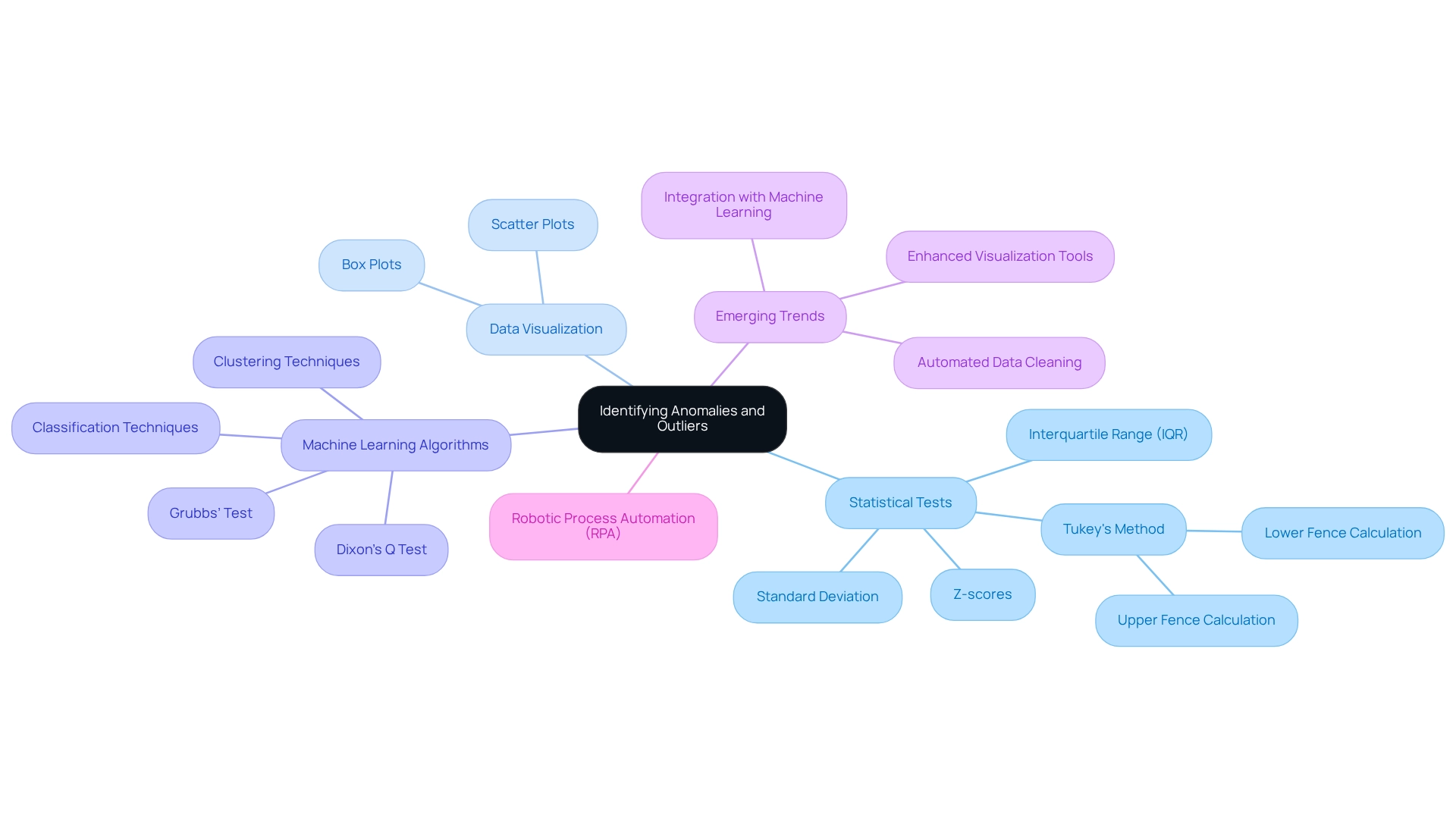
Category Two: Performing What-If Analysis
What-if analysis is a powerful technique that involves altering input variables to evaluate their impact on outcomes. This approach is widely employed in financial modeling, risk management, and operational planning, enabling entities to navigate uncertainties effectively. The key steps in performing what-if analysis include:
-
Define the Scenario: Begin by clearly outlining the variables that will be modified and the anticipated outcomes. This step is crucial for setting the parameters of the analysis.
-
Model the Changes: Utilize spreadsheet software or specialized analytics tools, potentially enhanced by Robotic Process Automation (RPA), to simulate various scenarios. This modeling allows for a structured approach to understanding potential outcomes based on different inputs, streamlining the workflow and reducing manual effort.
-
Analyze Results: After modeling, assess how the changes influence key performance indicators (KPIs). This examination is essential for making informed choices that align with institutional objectives, particularly in a swiftly changing AI environment where data-driven insights are crucial.
Utilizing what-if analysis enables entities to prepare for various future scenarios, refining strategies to bolster resilience against market variations. Recent statistics suggest that around 70% of entities utilize what-if analysis in their financial modeling processes, underscoring its importance in strategic planning. Additionally, the performance of predictive models can be quantified, with an R² score of 0.82 demonstrating their effectiveness in forecasting outcomes.
Expert insights highlight the importance of scenario modeling in operational planning, with financial analysts emphasizing that effective scenario modeling can lead to more robust decision-making frameworks. As noted by P8, scenario modeling serves as an adjunct to traditional analysis, enhancing the overall decision-making process. Moreover, as companies progressively embrace advanced analytics, the amalgamation of what-if analysis with AI and machine learning is anticipated to improve predictive capabilities, enabling real-time information processing and more tailored customer experiences.
Case studies demonstrate the practical use of what-if analysis in financial modeling. For example, companies that have implemented this technique have reported improved risk management strategies, enabling them to identify vulnerabilities and adapt to changing market conditions. The evolution of influence analysis, which is expected to integrate more deeply with AI and machine learning, will further enhance the capabilities of what-if analysis, fostering sustainable growth and corporate responsibility.
As we progress through 2025, the trend towards employing what-if analysis for business planning continues to expand, with companies increasingly acknowledging its importance in promoting sustainable growth and corporate responsibility. Additionally, WIA techniques facilitate collaborative analyses, allowing stakeholders to engage in decision reasoning collectively. Utilizing tools such as Power BI can further improve reporting and actionable insights, ensuring that organizations are prepared to make informed choices based on thorough analysis.
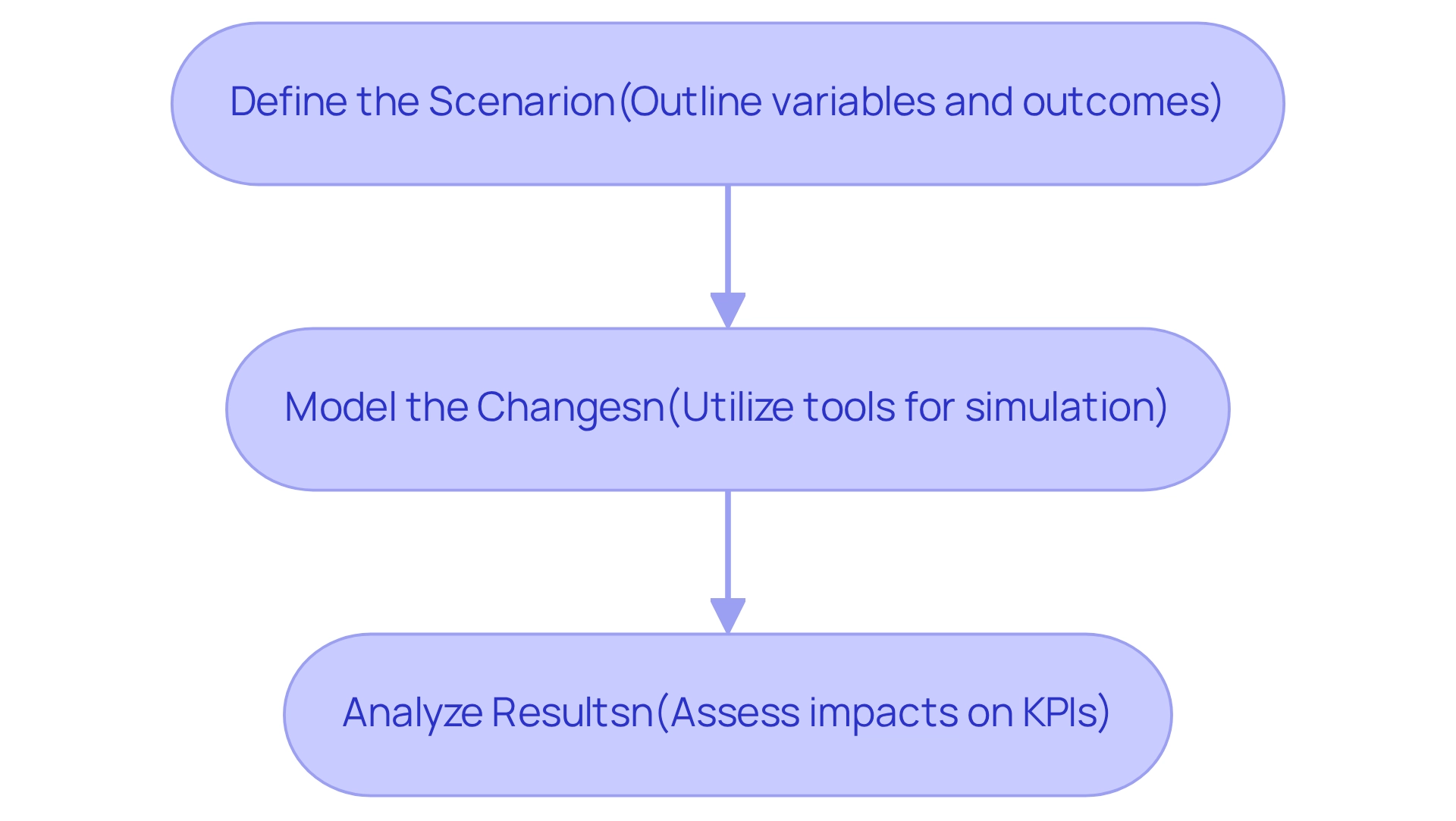
Practical Applications of Diagnostic Analytics in Business
In the realm of operational efficiency and strategic decision-making, understanding the pivotal role of diagnostic analytics across multiple sectors is essential. Its applications span various industries:
-
Healthcare: By analyzing patient data trends, healthcare providers can significantly enhance treatment outcomes and reduce readmission rates. For instance, a mid-sized healthcare company implemented GUI automation to streamline data entry and software testing, achieving a remarkable 70% reduction in data entry errors and a 50% acceleration in testing processes. This automation not only improved assessment precision but also empowered healthcare professionals to foresee illnesses and identify high-risk patients more effectively. A study involving 37 patients demonstrated the efficacy of these methods in deriving positive and negative likelihood ratios, leading to more precise recommendations for confirmatory tests and better management of patient outcomes. Furthermore, prescriptive analysis develops effective treatment strategies and suggests measures to enhance patient outcomes, ultimately improving operational efficiency in healthcare institutions. Notably, the ROI from these implementations was realized within six months, underscoring the effectiveness of GUI automation.
-
Finance: In the financial sector, analytical assessments are crucial for uncovering the root causes of revenue variations. By analyzing historical financial performance, organizations can optimize budgeting processes and make informed decisions that enhance profitability. The incorporation of evaluative insights fosters a culture of continuous improvement, enabling companies to adapt swiftly to evolving market conditions.
-
Retail: Understanding customer behavior is vital for crafting effective marketing strategies and optimizing inventory management. Retail experts emphasize the importance of utilizing analytical tools to gain insights into customer preferences and purchasing behaviors. This data-driven approach not only enhances customer satisfaction but also drives sales growth.
Through analytical assessments, organizations in these fields can make informed, data-driven choices that lead to enhanced efficiency and profitability. In today’s data-rich environment, the impact of these analytics transcends operational improvements, significantly enhancing financial performance. As Craig R. Denegar noted, the use of statistics is essential for establishing certainty in diagnosis, further highlighting the importance of robust analytical frameworks in achieving these results.
Moreover, case studies such as “Enhancing Diagnostics and Predictions through AI and Machine Learning” illustrate how AI and machine learning bolster diagnostic accuracy and predictive capabilities, resulting in more effective healthcare solutions. Client testimonials from entities like NSB GROUP and Hellmann Marine Solutions underscore the transformative impact of Creatum GmbH’s technology solutions in improving operational efficiency and fostering business growth. This is particularly evident through services like the 3-Day Power BI Sprint, which facilitates rapid report generation and actionable insights. The Power BI services offer features such as a comprehensive management application and a systematic approach to reporting, ensuring consistency and clarity in decision-making.
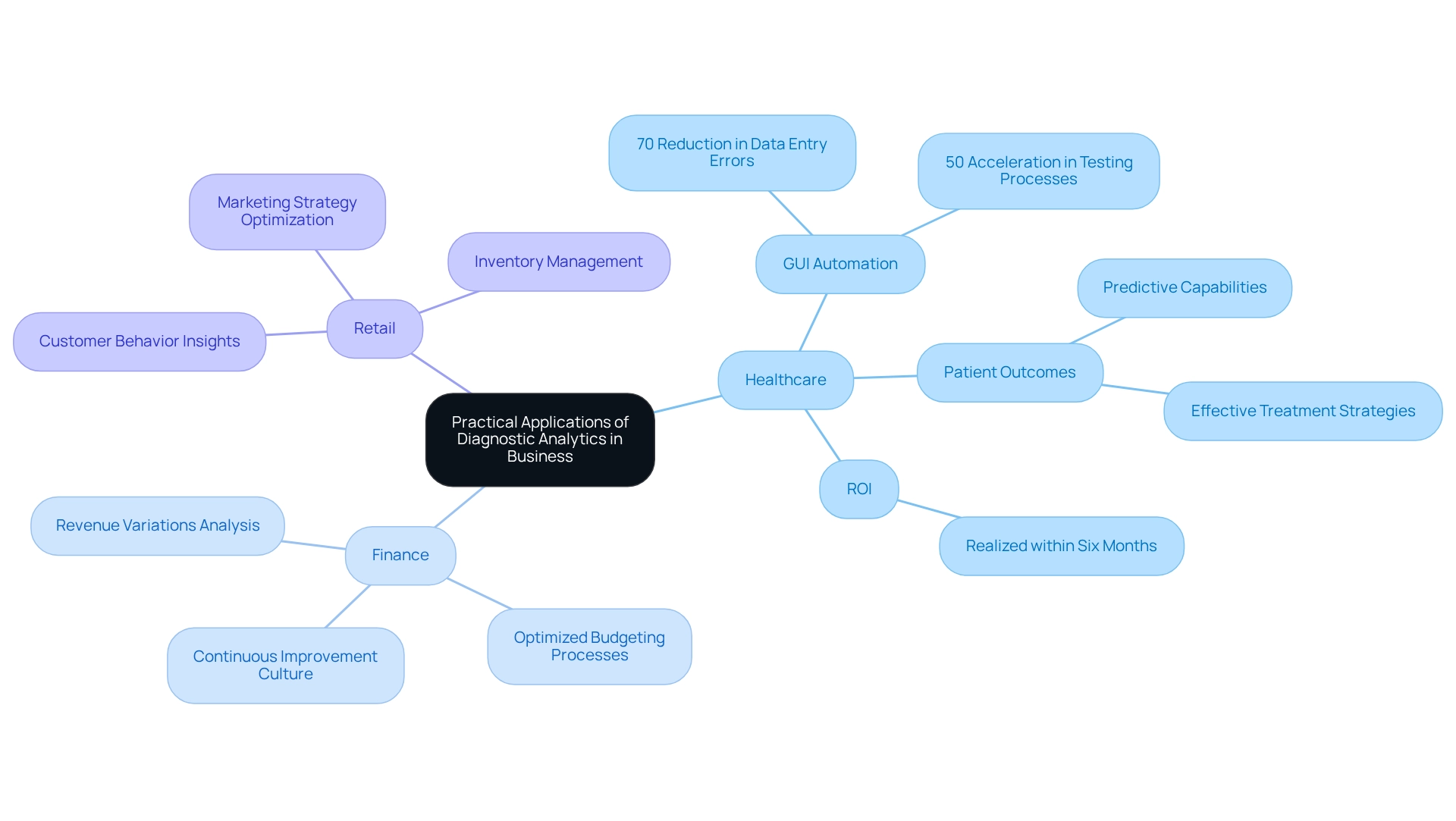
Challenges and Limitations of Diagnostic Analytics
While diagnostic analytics provides essential insights, companies frequently face significant challenges that can hinder its effective implementation.
-
Quality Issues: The accuracy and comprehensiveness of data are crucial. In 2025, organizations continue to grapple with data quality challenges, where incorrect or inadequate information can lead to misleading conclusions, ultimately affecting decision-making processes. Poor master data quality can severely impede the success of both RPA and Business Intelligence initiatives, making it vital to address these foundational issues.
-
Complexity of Analysis: The analytical landscape is becoming increasingly intricate, necessitating advanced statistical skills and sophisticated tools. This complexity can serve as a barrier for many organizations, limiting their ability to leverage analytical insights effectively. Tailored AI solutions can simplify this landscape, providing targeted technologies that align with specific business objectives and challenges, thereby enhancing analytical capabilities.
-
Resistance to Change: Employees may show reluctance to embrace new analytical methods, which can hinder progress. Implementing effective change management strategies is essential to facilitate this transition and foster a culture of data-driven decision-making. Organizations can overcome this resistance by promoting a culture of continuous education and skill enhancement in data science, similar to practices observed in leading firms like Amazon, which mandate ongoing ‘learning hours’ for analysts. Addressing these challenges is crucial for organizations aiming to maximize the benefits of evaluative analysis. For instance, a case study on transforming public health management illustrates how analytical techniques can analyze diverse data sources to identify disease outbreaks before they escalate. This capability enables healthcare organizations to manage public health emergencies more effectively, showcasing the potential to tackle data quality issues through the strategic application of RPA and Business Intelligence.
Moreover, retail leaders have successfully employed analytical assessments to understand customer purchasing patterns, refining their marketing strategies. Such examples underscore the importance of addressing complexity and data quality, two broad categories of diagnostic analytics, to enhance the efficiency of diagnostic analysis. As organizations navigate these challenges, expert insights suggest that fostering a culture of continuous learning and upskilling in analytics can significantly mitigate resistance and improve analytical capabilities.
Additionally, developing nations face challenges in adopting big data analysis in healthcare, particularly regarding integration and cloud-based innovations. This context emphasizes the broader hurdles organizations encounter when implementing evaluative analysis. Furthermore, platforms like Amplitude Analytics provide extensive analytical features, including root cause analysis, which can aid organizations in overcoming these challenges.
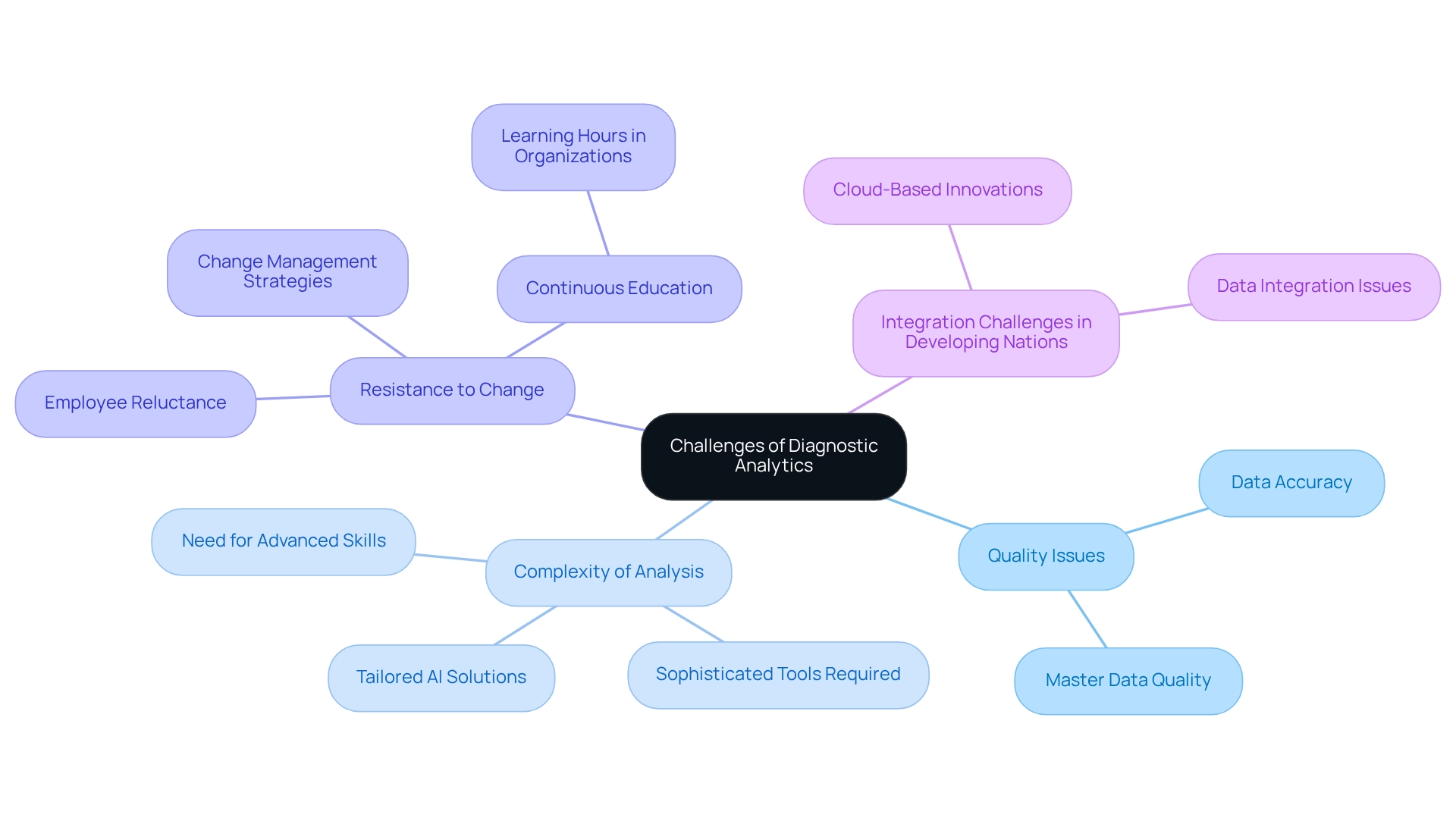
Integrating Diagnostic Analytics with Other Analytical Approaches
Combining evaluative assessments with other analytical methods, such as predictive and prescriptive techniques, creates a holistic data strategy that significantly enhances organizational competencies. This integration enables organizations to enhance forecasting, decision-making, and drive continuous improvement.
Enhance Forecasting: By leveraging insights derived from diagnostic analytics, organizations can refine their predictive models, resulting in improved accuracy in forecasting future trends and behaviors. For instance, a client experienced an impressive 264% rise in organic traffic after employing both evaluative and predictive methods, underscoring the tangible benefits of this strategy.
Enhance Decision-Making: The combination of historical insights from evaluative data with forward-looking predictions empowers organizations to make more informed strategic choices. This dual perspective ensures that decisions are rooted in both past performance and future potential, fostering a comprehensive view of the business landscape. As noted by the Analytics & Insights group at Seer, “The Analytics & Insights team also utilizes predictive analysis to assist clients in making data-informed choices regarding their marketing strategy by examining extensive data collections and recognizing trends that can be applied to forecast customer behavior and campaign effectiveness.”
Drive Continuous Improvement: Establishing a feedback loop where insights from diagnostic analytics inform ongoing adjustments in predictive models is essential for maintaining relevance in a dynamic market. This iterative process not only enhances the precision of predictions but also cultivates a culture of continuous improvement within the organization.
By adopting a multi-faceted analytical approach, organizations can achieve greater operational efficiency and strategic alignment. The integration of diagnostic analytics—one of the two broad categories of diagnostic analytics—with predictive and prescriptive analytics streamlines workflows and empowers teams to focus on value-adding activities, ultimately driving growth and innovation.
However, businesses often face challenges in integrating analyses, particularly when combining information from disparate sources. Manual information gathering from various sources can lead to inefficiencies and potential errors. Utilizing Business Intelligence tools such as Power BI, including our 3-Day Power BI Sprint for quick report generation and the General Management App for thorough management, can address these challenges by ensuring consistency and reliability in analysis, thereby enhancing the effectiveness of integrated analytical methods.
Furthermore, incorporating Robotic Process Automation (RPA) can streamline manual workflows, allowing teams to concentrate on strategic tasks rather than repetitive data handling. Additionally, hypothesis testing functions as a statistical procedure in evaluative studies, guiding the analysis with historically-oriented hypotheses, which is critical for informed decision-making.
To explore how these solutions can benefit your business, schedule a complimentary consultation with us today.
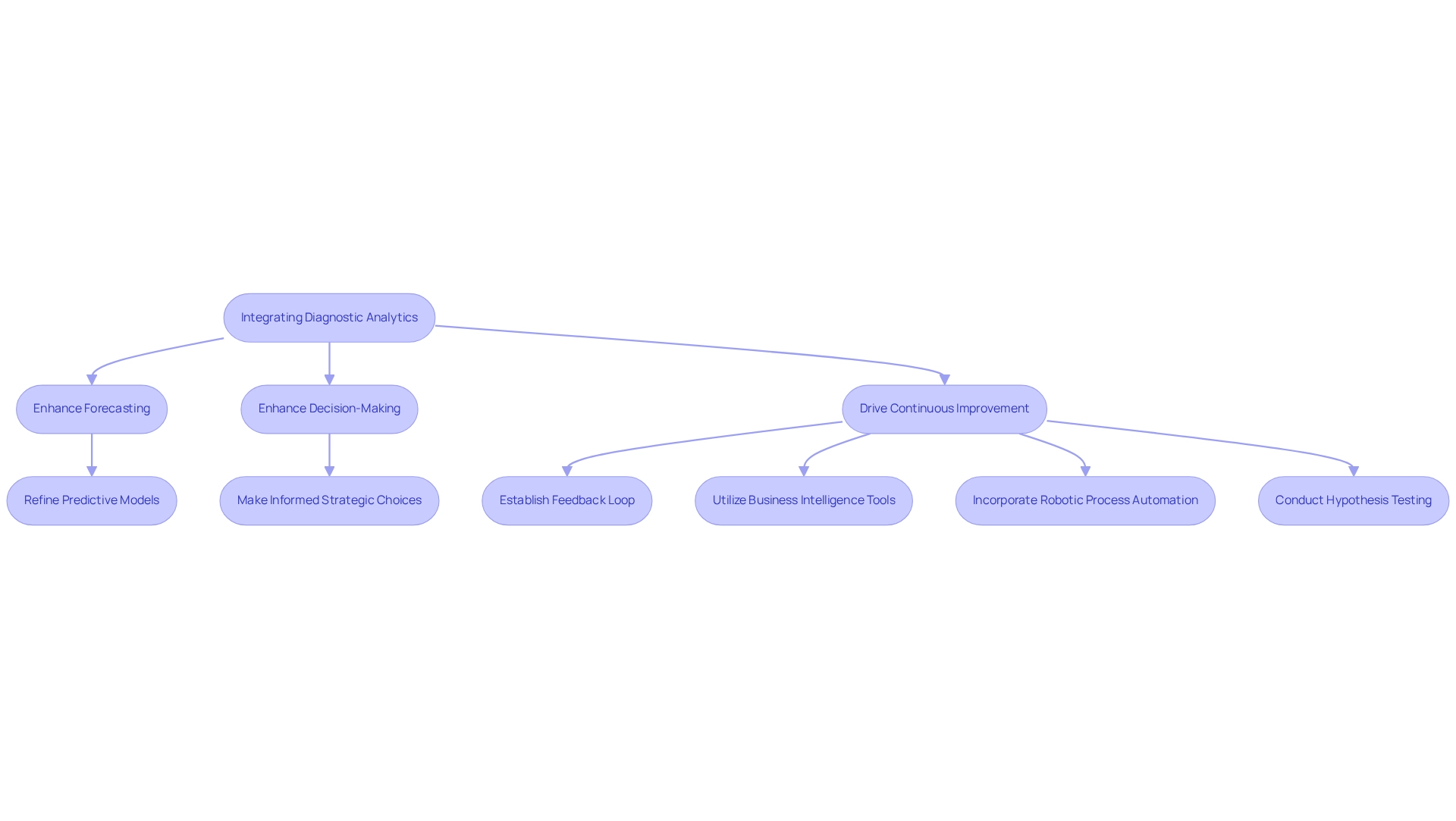
Strategies for Implementing Diagnostic Analytics in Your Organization
To effectively implement diagnostic analytics within your company, consider the following strategies:
-
Invest in Training: Equip your team with essential skills in data analysis and interpretation. Research shows that 88% of entities mention inadequate user experience as a main reason for changing learning technology solutions, emphasizing the necessity for effective training programs that improve user engagement and analytical abilities. Furthermore, with 17% of small enterprises employing virtual classrooms, companies should investigate various training techniques to address their teams’ requirements. Creatum GmbH provides specialized training as a component of its Comprehensive Power BI Services, guaranteeing your team can utilize advanced analysis tools efficiently.
-
Ensure Information Quality: Establish robust processes for information cleansing and validation. High-quality information is essential for dependable insights; organizations that prioritize information quality often experience substantial enhancements in their analytical results. For example, 92% of survey participants think that aligning training objectives with a positive employee experience can improve quality initiatives. Subpar master data quality can obstruct AI adoption, making it crucial to tackle these issues proactively.
-
Leverage Technology: Utilize advanced analytical tools and software, such as those provided in our 3-Day Power BI Sprint, to enhance data analysis and visualization. This sprint is designed to help you create professional reports quickly, allowing your team to focus on deriving actionable insights from complex datasets. The integration of sophisticated technologies can streamline the data analysis process, enhancing operational efficiency.
-
Foster a Data-Driven Culture: Encourage a culture that values data-driven decision-making at all organizational levels. Industry leaders stress that nurturing such a culture is essential for optimizing the effects of data analysis. For example, 50% of learning and development professionals work closely with executive leadership, and 44% collaborate with the chief human resource officer to ensure that data initiatives align with strategic goals. By leveraging RPA to automate manual workflows, you can free up resources for more strategic, value-adding work, which aligns with the question of which of the following is one of the two broad categories of diagnostic analytics, further embedding a data-driven mindset within your organization. By implementing these strategies, organizations can successfully integrate diagnostic analytics into their operations, leading to meaningful improvements and informed decision-making. The emphasis on training goals that reinforce a positive employee experience further illustrates the importance of aligning training initiatives with broader cultural and engagement objectives.
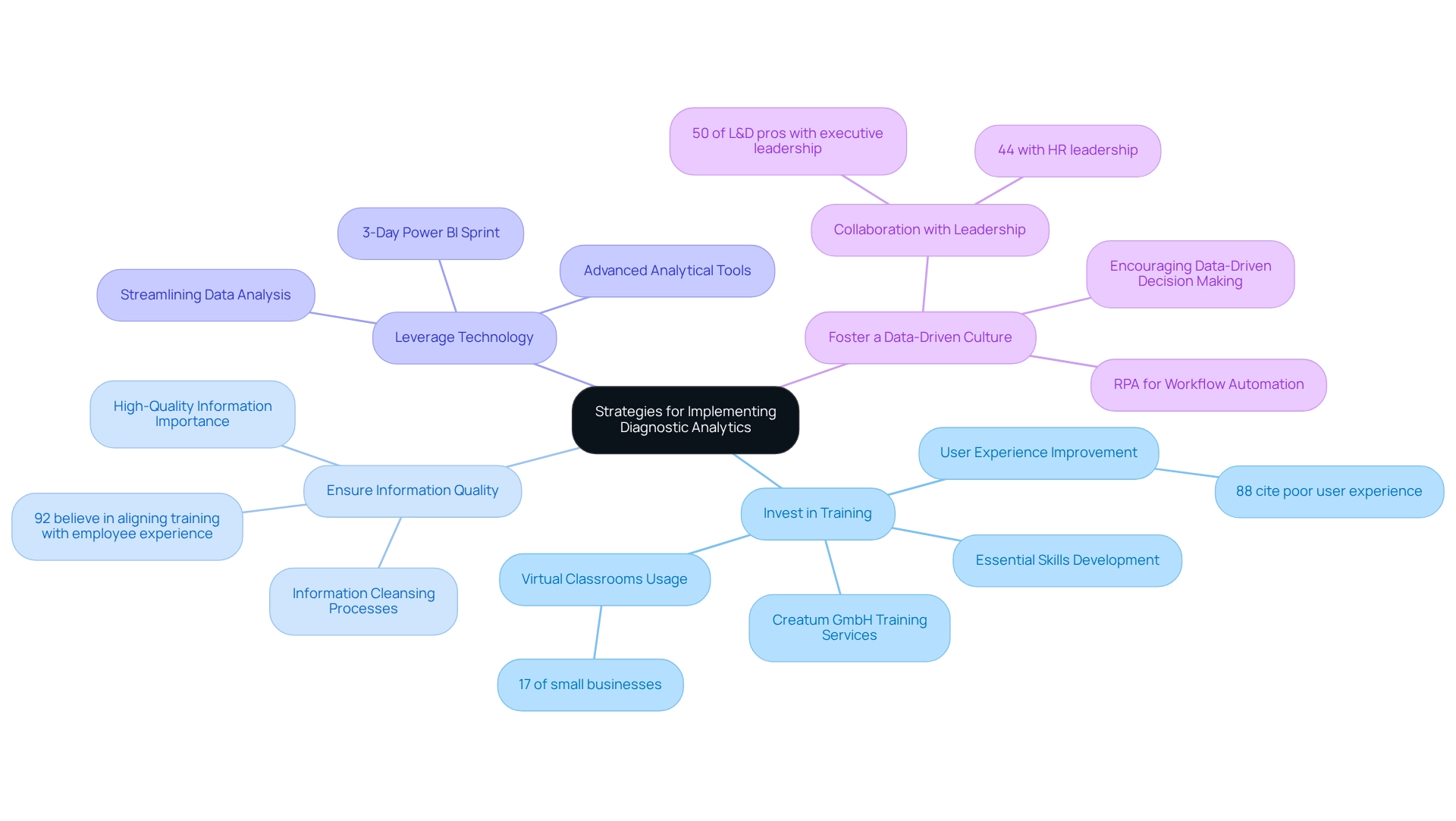
Conclusion
Diagnostic analytics emerges as a transformative force in today’s data-driven landscape, enabling organizations to explore the underlying reasons behind past events and trends. By setting itself apart from more superficial analytical methods, it empowers businesses to make informed decisions that enhance operational efficiency and drive innovation. The increasing integration of advanced technologies, such as Robotic Process Automation and machine learning, further amplifies its potential across various sectors, including healthcare, finance, and retail.
The practical applications of diagnostic analytics are extensive, yielding significant improvements in operational performance and strategic decision-making. For instance, reducing patient readmission rates in healthcare and optimizing inventory management in retail illustrate how insights generated through diagnostic analytics foster a nuanced understanding of organizational dynamics. However, the successful implementation of these analytical strategies presents challenges. Organizations must tackle data quality issues, overcome resistance to change, and invest in continuous training to fully leverage the power of diagnostic analytics.
As the landscape of data analytics evolves, integrating diagnostic analytics with predictive and prescriptive approaches becomes crucial for organizations seeking a competitive edge. By cultivating a culture of data-driven decision-making and utilizing advanced analytical tools, businesses can confidently navigate the complexities of the modern market. Embracing diagnostic analytics transcends mere data analysis; it transforms insights into actionable strategies that propel growth and sustainability in an increasingly complex world.
Frequently Asked Questions
What is diagnostic analysis?
Diagnostic analysis is a field that investigates the underlying reasons for past occurrences and trends, providing deeper insights into why specific results occurred, unlike descriptive analysis, which only summarizes historical data.
How does investigative assessment differ from descriptive analysis?
Investigative assessment delves into the reasons behind specific results, offering insights that help organizations enhance operational efficiency, whereas descriptive analysis simply summarizes past data without providing deeper understanding.
What is the significance of diagnostic analysis for organizations?
Diagnostic analysis is essential for organizations aiming to improve operational efficiency and make informed, data-driven decisions by identifying root causes of inefficiencies.
What is the projected growth of the Internet of Medical Things market by 2025?
The global Internet of Medical Things market is projected to reach $286.77 billion by 2025, highlighting the increasing importance of assessment metrics in healthcare and operational efficiency.
How are healthcare organizations utilizing assessment insights?
Healthcare organizations are using assessment insights alongside Robotic Process Automation (RPA) tools to enhance patient outcomes through early illness forecasting and tailored treatment strategies.
What benefits do organizations experience by implementing robust information protection measures?
Organizations that implement robust information protection measures, such as encryption and access control, see significant improvements in operational efficiency while ensuring compliance with regulations like GDPR.
What role does diagnostic analysis play in decision-making according to industry leaders?
Diagnostic analysis is considered vital for informed decision-making, and investing in education related to information science, machine learning, or healthcare informatics is crucial for organizations to navigate the complexities of data analysis.
What are the two primary types of diagnostic analytics?
The two primary types of diagnostic analytics are anomaly detection and what-if analysis.
What is anomaly detection and its importance?
Anomaly detection identifies unusual patterns or outliers in data that deviate from expected behavior, which is critical for various industries, including finance for fraud detection, healthcare for patient monitoring, and retail for inventory management.
How does what-if analysis benefit businesses?
What-if analysis allows businesses to simulate different scenarios by adjusting key variables to observe potential outcomes, significantly enhancing decision-making efficiency and enabling proactive planning.
What distinguishes anomaly detection from what-if analysis?
Anomaly detection aims to identify immediate issues that require attention, while what-if analysis supports proactive planning by exploring potential future scenarios.
How can AI solutions enhance diagnostic analytics capabilities?
AI solutions, such as Small Language Models and GenAI Workshops, can improve companies’ abilities to address quality challenges and effectively train personnel, thereby enhancing their analytical capabilities.
What is the role of Robotic Process Automation (RPA) in operational efficiency?
RPA streamlines manual workflows, allowing teams to focus on more strategic, value-adding tasks, which enhances overall productivity in a rapidly evolving AI landscape.

